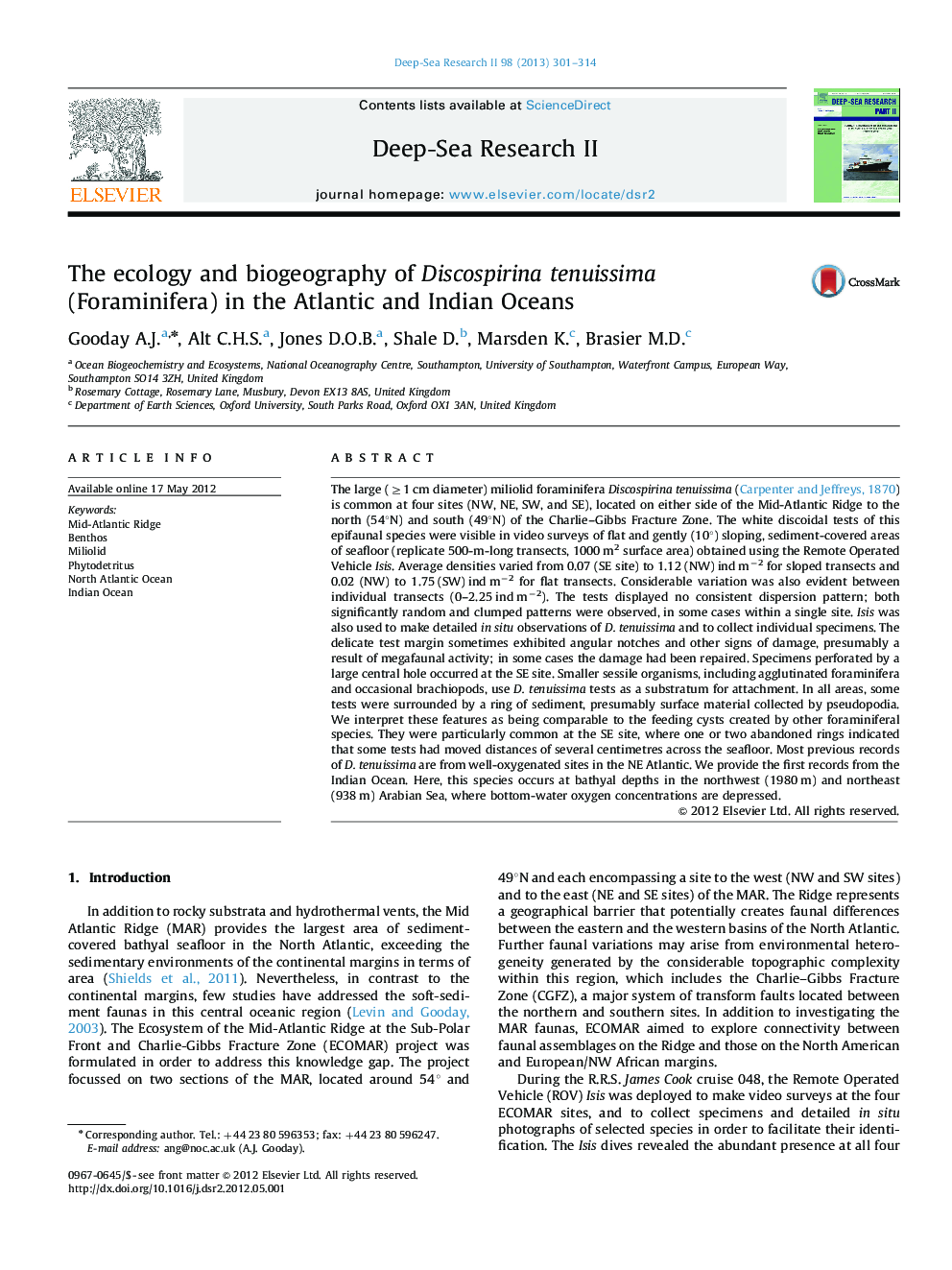| Article ID | Journal | Published Year | Pages | File Type |
|---|---|---|---|---|
| 6384310 | Deep Sea Research Part II: Topical Studies in Oceanography | 2013 | 14 Pages |
Abstract
The large (â¥1 cm diameter) miliolid foraminifera Discospirina tenuissima (Carpenter and Jeffreys, 1870) is common at four sites (NW, NE, SW, and SE), located on either side of the Mid-Atlantic Ridge to the north (54°N) and south (49°N) of the Charlie-Gibbs Fracture Zone. The white discoidal tests of this epifaunal species were visible in video surveys of flat and gently (10°) sloping, sediment-covered areas of seafloor (replicate 500-m-long transects, 1000 m2 surface area) obtained using the Remote Operated Vehicle Isis. Average densities varied from 0.07 (SE site) to 1.12 (NW) ind mâ2 for sloped transects and 0.02 (NW) to 1.75 (SW) ind mâ2 for flat transects. Considerable variation was also evident between individual transects (0-2.25 ind mâ2). The tests displayed no consistent dispersion pattern; both significantly random and clumped patterns were observed, in some cases within a single site. Isis was also used to make detailed in situ observations of D. tenuissima and to collect individual specimens. The delicate test margin sometimes exhibited angular notches and other signs of damage, presumably a result of megafaunal activity; in some cases the damage had been repaired. Specimens perforated by a large central hole occurred at the SE site. Smaller sessile organisms, including agglutinated foraminifera and occasional brachiopods, use D. tenuissima tests as a substratum for attachment. In all areas, some tests were surrounded by a ring of sediment, presumably surface material collected by pseudopodia. We interpret these features as being comparable to the feeding cysts created by other foraminiferal species. They were particularly common at the SE site, where one or two abandoned rings indicated that some tests had moved distances of several centimetres across the seafloor. Most previous records of D. tenuissima are from well-oxygenated sites in the NE Atlantic. We provide the first records from the Indian Ocean. Here, this species occurs at bathyal depths in the northwest (1980 m) and northeast (938 m) Arabian Sea, where bottom-water oxygen concentrations are depressed.
Related Topics
Physical Sciences and Engineering
Earth and Planetary Sciences
Geology
Authors
Gooday A.J., Alt C.H.S., Jones D.O.B., Shale D., Marsden K., Brasier M.D.,
